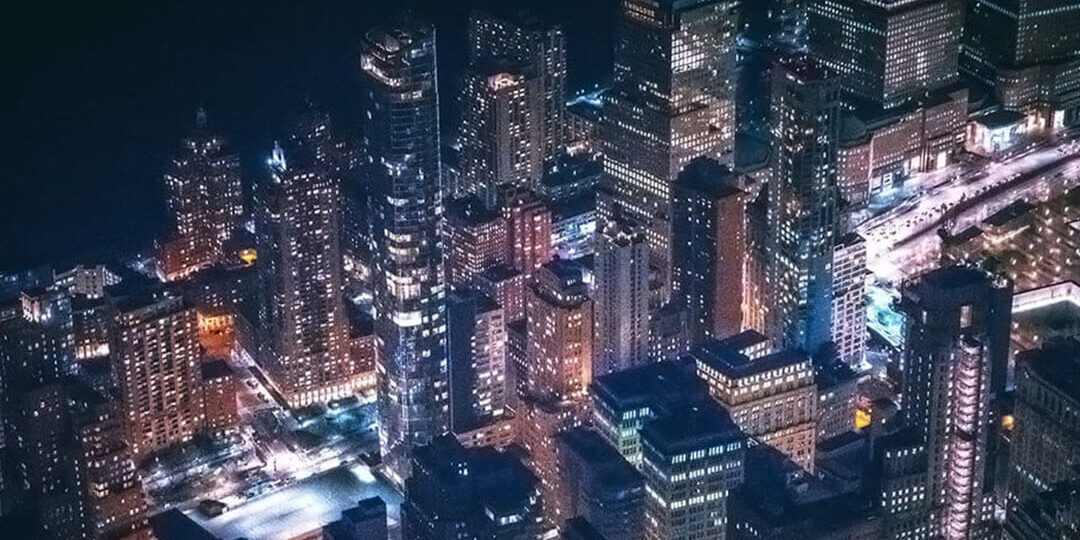Nuclear war would forever split human history. Into anything that happened before and the post-war apocalypse. In the worst case, mass fires consume everything within tens of thousands of square kilometers, killing hundreds of millions within hours. But the worst part comes after that – nuclear war could trigger a nuclear winter that might kill billions, maybe even completely collapsing our civilization. How does it work and what would it look like?
Fire Causes Winter When a nuclear weapon is detonated, a bubble of gas hotter than the sun is forced into existence, so hot that everything within kilometers immediately begins to burn. The terror bubble expands rapidly, filling the sky over its target, creating a devastating shockwave that causes most of the immediate destruction. Basically, you break a lot of stuff and set it on fire – and in the worst case this turns into a firestorm that consumes everything and everyone on the ground. Right after the explosion a gigantic mushroom cloud rises over the destruction like a demon throning over its perverse work, but in the following hours a far more deadly cloud forms.
The fire burning cities, forests or fields, heats up so much air that it creates its own micro climate and wind system.
Hot air and hot smoke rise, pulling in fresh air from the surroundings, and fresh oxygen stoking the flames even more.
This creates an updraft and forms a colossal pyrocumulonimbus cloud that carries the soot and aerosols from the flames high into the stratosphere. Under normal conditions, the soot rising from a big fire is quickly washed out by rain. But a pyrocumulonimbus cloud can reach altitudes well above the height where rain clouds form. Once above the tropopause, there is simply no weather to remove soot from the atmosphere, so it can stay aloft for years.
If this happens to a single city, it’s a tragedy, but a fairly local one.
But in a full-scale nuclear war, warring nations following the cold logic of mutually assured destruction, could use hundreds or even thousands of nuclear weapons all at once, creating hundreds of fire storms, sending up to 150 million tons of soot, a cube the size of a skyscraper, directly into the stratosphere. In the next few days and weeks, the soot begins to blanket the earth at high altitudes, absorbing light high above the ground and preventing sunlight from reaching the surface.
This is not like science fiction where the sky turns dark, and the sun disappears. Winter is what happens when just a little less sunlight hits the ground – and now suddenly a lot less sunlight gets through.
Yesterday the world was normal. Today nuclear winter begins. Winter Causes Hunger How bad nuclear winter would be is still an active area of research. It all hinges on one thing: How much stuff will burn really hot? How many firestorms would be caused by the heat of the explosions?
This depends on many factors, from the materials a city is made of, to the time of the year, if a forest is nearby and so on.
So just keep in mind we are working with some assumptions. Here is the good news: Nuclear winter is not permanent, and definitely no new ice age. The effects on the climate only last as long as the soot remains in the atmosphere, which is at most a decade or so until it clears out and temperatures normalize.
The bad news is that this causes almost immediate climate change within a few weeks – it disrupts our climate system faster than any living being can adapt to.
In this new climate our seasons are suddenly all wrong.

Winters are much longer, summers shorter and colder – or gone altogether. This also means less evaporation over the oceans, which means less rain and maybe large scale droughts. This is bad because our food eats the sun. Without good summers and enough rain, growing seasons shrink or even collapse.
The majority of humanity lives in an area called the midlatitudes, a strip of land that has the ideal temperature for our species – not just because it’s not too hot or cold, it’s also where the plants we eat grow best. The vast majority of the food we eat stems from a few highly efficient crops, that are mostly produced in a few very agriculturally productive regions, like the US Great Plains or Ukraine.
From these bread and rice baskets of the world, they get traded and shipped around the world.
In the worst case of a full-scale nuclear war the temperatures in the midlatitudes will probably stay below freezing for several years. Nothing at all can grow under these conditions and the world’s breadbaskets would suddenly turn empty.
If food production crashes, the world’s food producers would very likely ramp up prices or even stop selling food to other countries – if they’re still able to farm their fields at all.
It’s easy to calculate how many people can be alive on earth – you take all the calories we can produce and divide them by what the average person needs to survive. If you have more people than calories, then within a few weeks you don’t anymore.
Humanity has only a few weeks’ supply of crops and food, not enough to survive this drastic drop in production. But the climate is not the only issue: modern industrialized agriculture is a complex affair that relies on functioning supply chains to provide unthinkable amounts of industrially produced fertilizer and chemicals to kill weeds and vermin.
Massive numbers of specialized modern machinery is plowing, sowing, harvesting and distributing. After a nuclear war, especially if the countries that produce the food were part of the nuclear exchange, there may simply be no more fuel, fertilizer or machine parts, because there are no more oil refineries, ports and other essential infrastructure left, damaging global food production even more. Ok, so now that we set the stage, let’s look at what science says about the actual wars that could happen. Actual Nuclear War Today there are two main conflicts that scientists think about when making calculations of nuclear winter: a nuclear war between India and Pakistan and one between the US and Russia.
The most likely smallish nuclear exchange would be fought today between India and Pakistan, with relatively low yield weapons.
Even in a pretty mild nuclear war like this, the immediate explosions would kill around 27 million people, which is horrible enough. In just a few hours, more people would die than in all of World War 1. The ensuing fires would not cause a nuclear winter, but a mild ‘nuclear autumn’. But even this would disrupt the climate, and thereby global agriculture, enough to starve up to 250 million people worldwide. Unfortunately India and Pakistan are in an arms race and have been increasing the number and power of warheads in their arsenal.
The next stage of escalation would be war with hundreds of nuclear weapons, the bombs and fires destroying many major population centers and killing over 100 million people. A war on this scale would cause a nuclear winter that would damage global agriculture enough to cut the available calories for humanity in half. The number of people that starve to death would be as high as 2 billion.
One in four humans alive today. The worst-case scenario is a full-scale global war between NATO nations and Russia – or China, which also continues to build its nuclear arsenal.
In a war between a former, future and current superpower, thousands of nuclear weapons could be detonated. In a scenario with around 4400 nuclear weapons, 360 million people would perish right away.
We have no other event to even compare the death and destruction to. It’s like humanity dropping an asteroid on itself. The nuclear winter that follows such an apocalyptic war would tank human calorie production by as much as 90%.
Not only would almost all of our agriculture take an immediate and deadly hit, but the climate would also take at least a decade to recover. Because a war like this would specifically hit the world regions that produce most of the food for humanity – recovery will be much, much harder than with other conflicts. Within two years the global death toll from starvation could rise to about 5 billion. In mid latitude countries like Russia, China, Canada, the U.S.
And much of Europe only a few percent of the population might survive. Humanity will never be the same again. While nowhere is truly safe, some nations in the southern hemisphere may fare well enough to endure, while the rest of the world collapses. All the nuclear weapon states are in the northern hemisphere. So, a few countries like Australia, New Zealand, and Argentina may be able to endure for a bunch of different reasons.
Their nuclear winter would be milder, they have a lot of livestock that would not be as affected as crops.
So they would probably stop exporting food and focus on keeping their own people alive – assuming they aren’t invaded for their food by other starving nations. It’s safe to say that the world would become extremely unpleasant for a long time and it’s impossible to know how many people will have died when the nuclear winter ends. In the worst-case human civilization could collapse, and the survivors would be thrown back thousands of years, slowly trying to recover a world full of scars and graves. Eventually, when they’ve rebuilt civilization, would they ever build nuclear weapons again?
We know for sure that we need to do anything we can to make sure nuclear war never happens.
This video was supported by Open Philanthropy – if you want to know what YOU can do to reduce the risk for nuclear war you can either support expert organizations or become a citizen expert yourself and learn more. We’ve compiled a list of further reading and expert recommendations in the infobot and our sources doc for you. Thank you so much for helping us clear out the Kuresa warehouse for our big move! But watch out – sometimes creepy things are hiding behind those boxes.
Wild DREAD appears! What will you do? Quick! Grab something from one of the boxes to defend yourself. You used AWE!
It’s very effective against DREAD! ¡Look! You’ve unlocked some amazing deals! Save up to 50% on awe-inspiring products in our biggest sale ever. Some of our finest creations are eager to find a new home – like the Duck Plushie, our elaborately designed notebook series and a few of our very best infographic posters.
The barbs will be moving the last boxes to the new warehouse soon – so grab a notebook, plushie, pin or poster before the moving sale ends – or before dread gets a hold of them.
The barbs really appreciate it!
https://advertisefree.online/promowall.php?rid=677
Discover more from Making Money Is Easy
Subscribe to get the latest posts sent to your email.




































You must be logged in to post a comment.